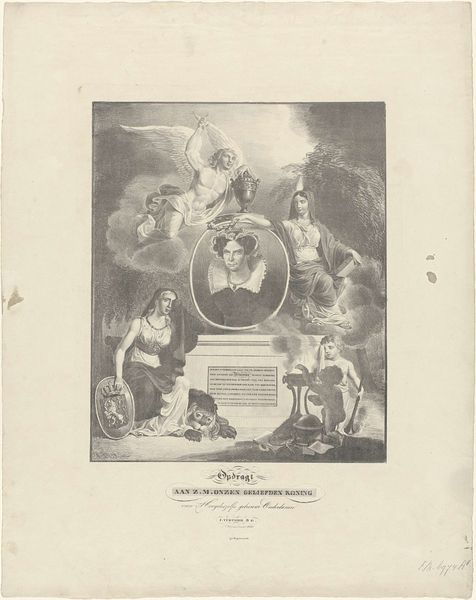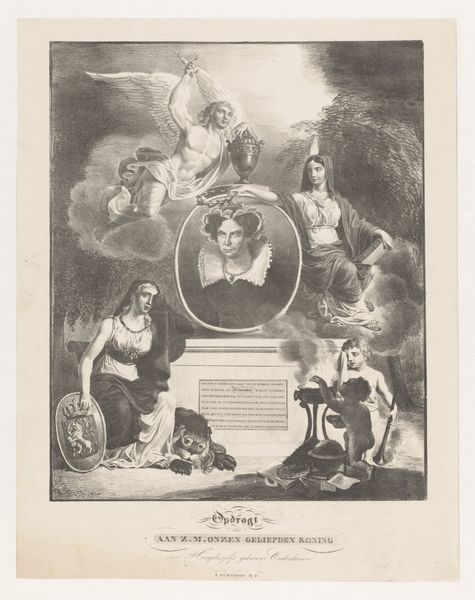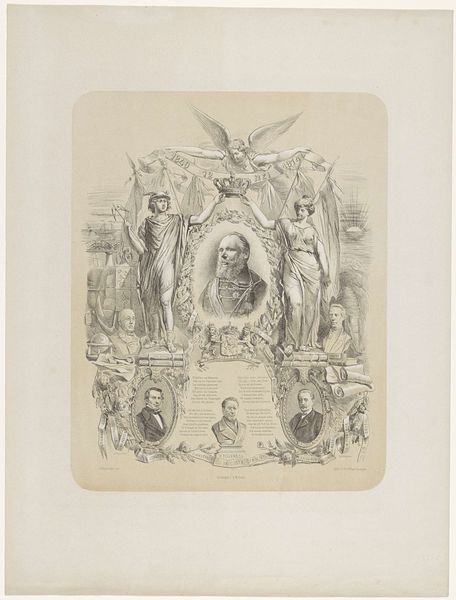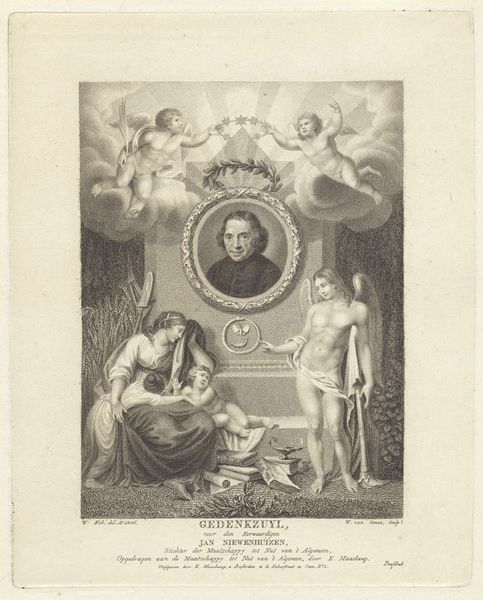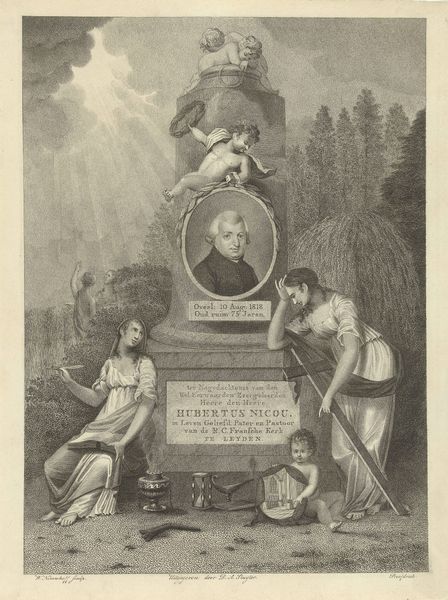
Allegorisch grafmonument voor koningin Wilhelmina van Pruisen, 1837 1837
0:00
0:00
anonymous
Rijksmuseum
print, engraving
#
portrait
#
neoclacissism
#
allegory
# print
#
history-painting
#
engraving
Dimensions: height 437 mm, width 327 mm
Copyright: Rijks Museum: Open Domain
This allegorical print, made in 1837 by an anonymous artist, commemorates Queen Wilhelmina of Prussia. It's rendered in monochrome, employing a dense network of fine lines to create texture and tonal variation. The composition is organized around a central oval portrait of the Queen, set atop a plinth that creates a strong vertical axis, around which a symbolic landscape unfolds with figures representing virtues and national identity. The use of chiaroscuro enhances the drama, emphasizing the contrast between light and shadow to create a sense of depth and emotional intensity. This structured arrangement reflects the hierarchical values of the period, where symbolism and allegory were deployed to create a system of signs that would communicate particular values, attributes and ideals. The rigid composition and detailed execution suggest a desire to control and codify meaning, reflecting the broader project of the Enlightenment to classify and order the world through reason and visual representation. The allegorical framework reinforces these notions of fixed meaning.
Comments
No comments
Be the first to comment and join the conversation on the ultimate creative platform.
